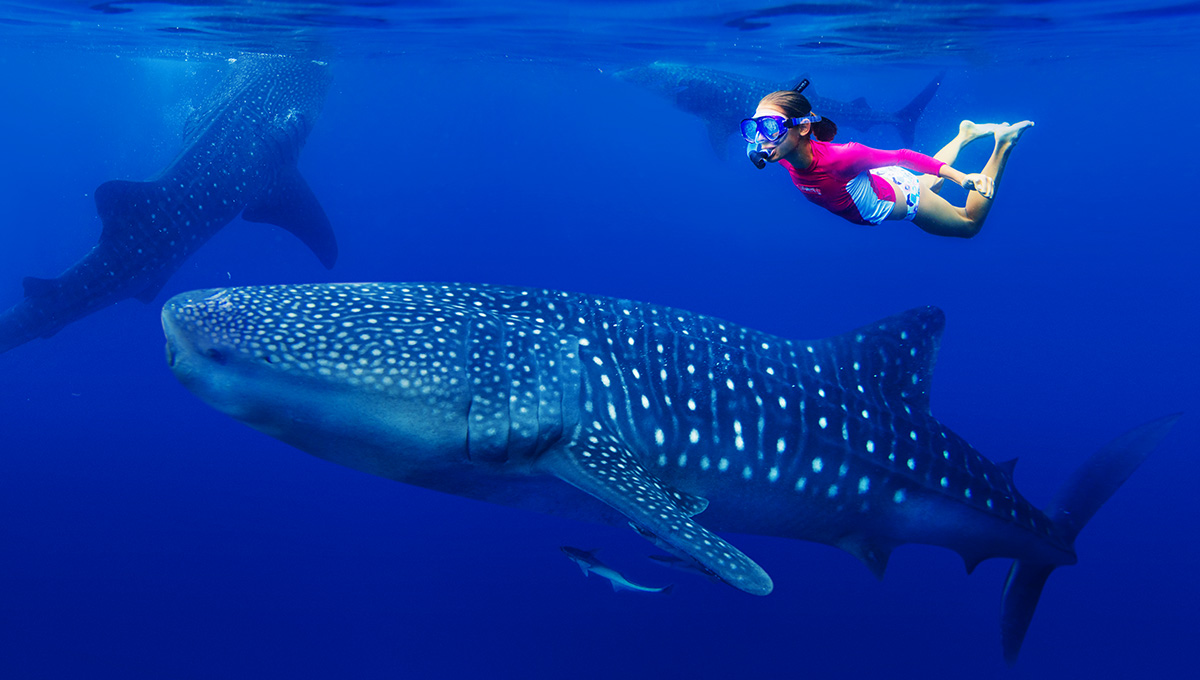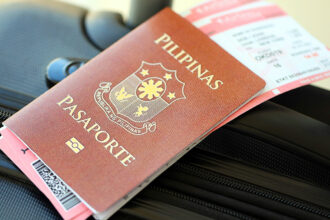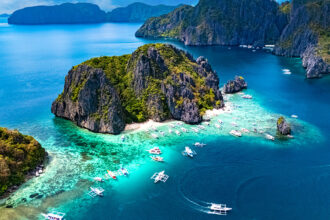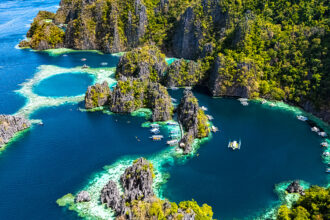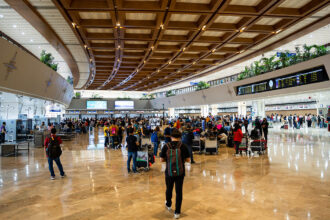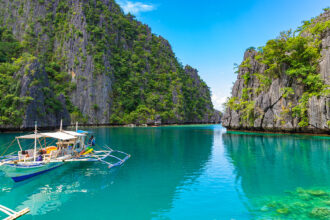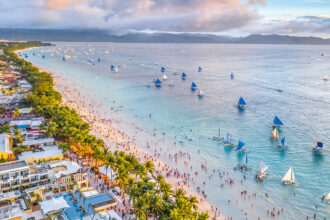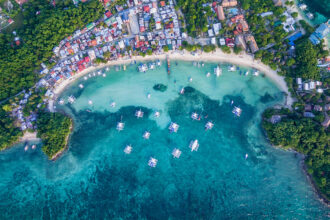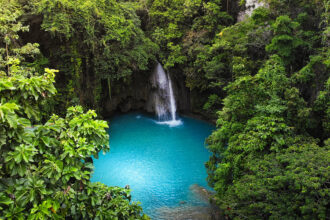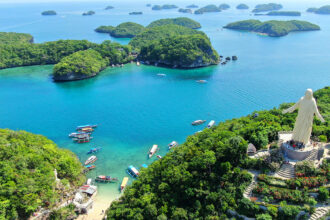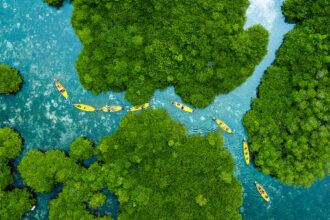“The ocean stirs the heart, inspires the imagination, and brings eternal joy to the soul.”
Welcome! The Philippines is a beautiful string of islands, not just land, but an open door to a stunning world underwater.
This saying perfectly captures your adventure. You aren’t just visiting a new place, you’re stepping into the centre of all marine life, the most stunning part of the Coral Triangle. It is the year 2025, the reefs are thriving, and it is time to trade the noise of the world for the peaceful, blue harmony of the seas of the Philippines snorkeling.
Prepare yourself to immerse. While cruising the surface of your adventure would be great, there await in front of you living, sparkling treasure boxes, decorated with coral cities, silver schools, and the ancient, graceful movement of sea turtles.
Let the ocean stir your heart, and let it inspire your imagination. Now, your adventure begins into an extraordinary sanctuary, guided by sustainable and responsible practices.
Top Philippines Snorkeling Spots You Can’t Miss
Part I: The Historic Shrines – Where Legends Live
They are the recognisable theatres of marine life- a glimpse into the Philippine oceanic experience.
1. Moalboal, Cebu: The Silver Cyclone of Sardines
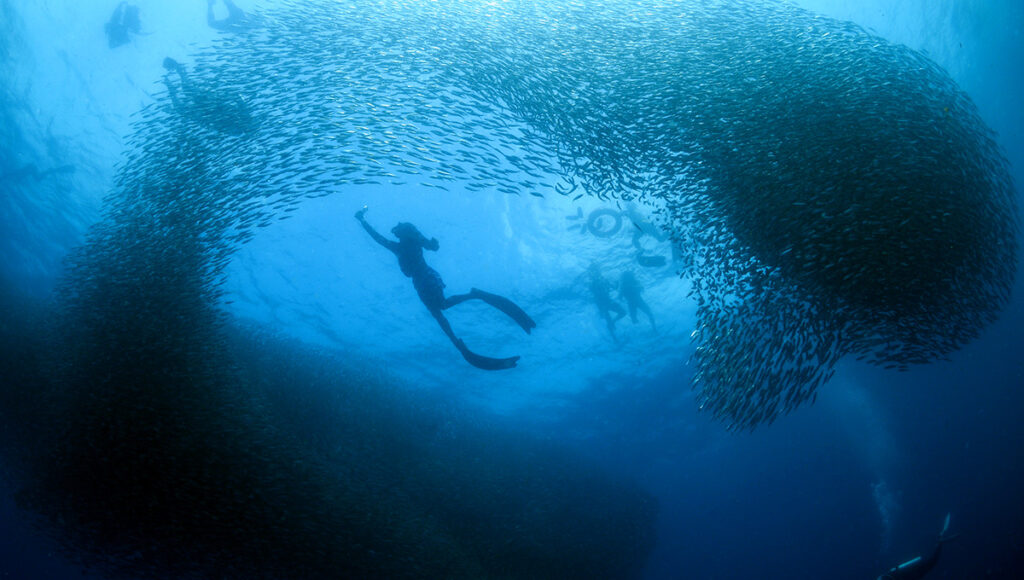
In the town of Moalboal, just fin-kicks from Panagsama Beach, is one of the most accessible natural marvels on the planet: The Sardine Run. It’s not an event that comes and goes but a permanent, breathtaking spectacle.
Just imagine: millions of sardines, swirling, shining, a dark cloud of silver and moving like one big, gigantic organism. All the snorkeler has to do is float at the surface of the water and behold this amazing sight. The school turns, twists, and transforms into the look of massive birds or funnels as they try to evade a darting tuna or jack. It is overwhelming, a visual and visceral display of the brute force and coordinated grace of marine life, and a snorkeler, even an inexperienced one can participate. This is truly one of the highlights of Philippines Snorkeling.
2. Apo Island, Negros Oriental: The Turtle Sanctuary
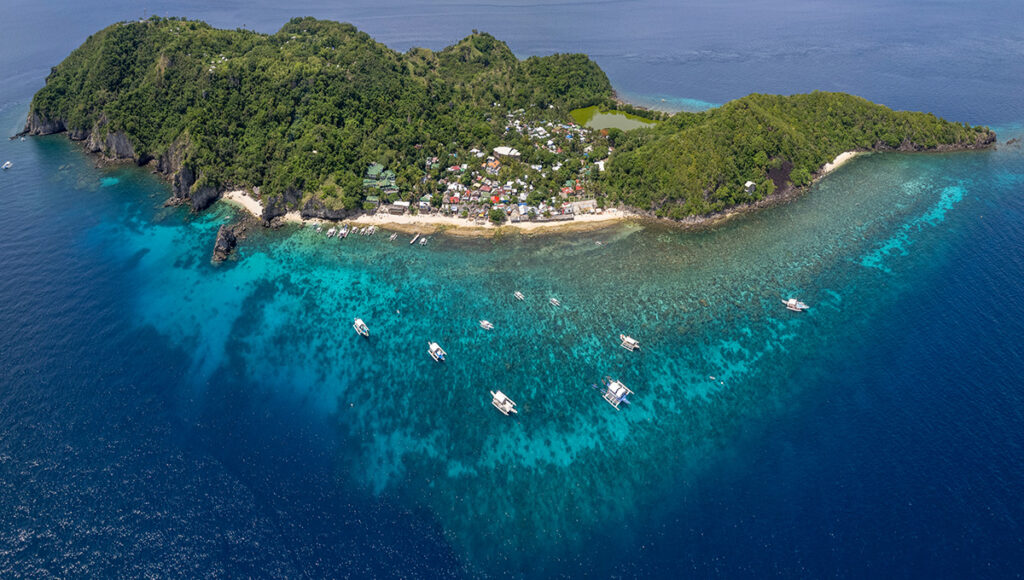
A small, volcanic gem off the coast of Negros Oriental, Apo Island has made a name for itself as a global success in community-led marine management, contributing to the conservation goals of the Coral Triangle Initiative. For a snorkeler, it’s virtually guaranteed that you will have an awe-inspiring, life-changing encounter.
As you slip into the crystal-clear waters, you begin to enter a calm nursery where green and hawksbill sea turtles serenely graze on the seagrass beds. They are so used to human visitation and respect that they may float by within your outstretched arm, their wise eyes hiding the stories of the deep. Going deeper than the shallows, the biologically healthy reef slopes are teeming with hard and soft corals, displaying decades of protection, and filled with parrotfish, clownfish, and countless other reef inhabitants. Apo is an ultimate journey, a spirituality that inspires contemplation of humanity’s harmonious potential with nature.
3. Coron, Palawan: Wrecks and Quiet Lagoons
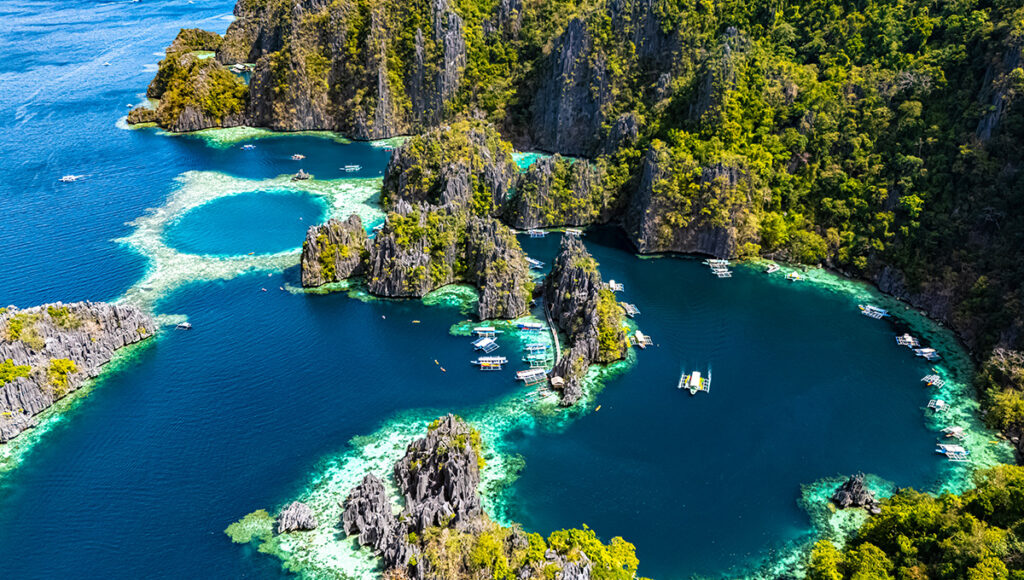
Palawan, the “Last Frontier”, features a phenomenally beautiful snorkeling setting. Coron has striking limestone cliffs that plunge into turquoise waters, hiding astonishing treasures above and below the surface.
Besides being known for its WWII wreck dives, snorkelers can view remnants of history at sites such as Lusong Gunboat Wreck, located in a shallow area. If you’re looking for something entirely different, gently drift in the stunning waters of Kayangan Lake or Barracuda Lake, some of the cleanest lakes in Asia, and observe the marvellous thermocline of warm and cold waters stacked against massive limestone walls, and fish. The clear visibility here is another hallmark of a great Philippines diving season, and to make the most of your trip, check out the best time to visit Palawan
Part II: Hidden Treasures Off the Beaten Path
For the traveller who seeks solitude and unspoiled, off-the-beaten-path beauty, these havens offer a sense of closeness to the ocean.
4. Balicasag Island, Bohol: The Marine Wall
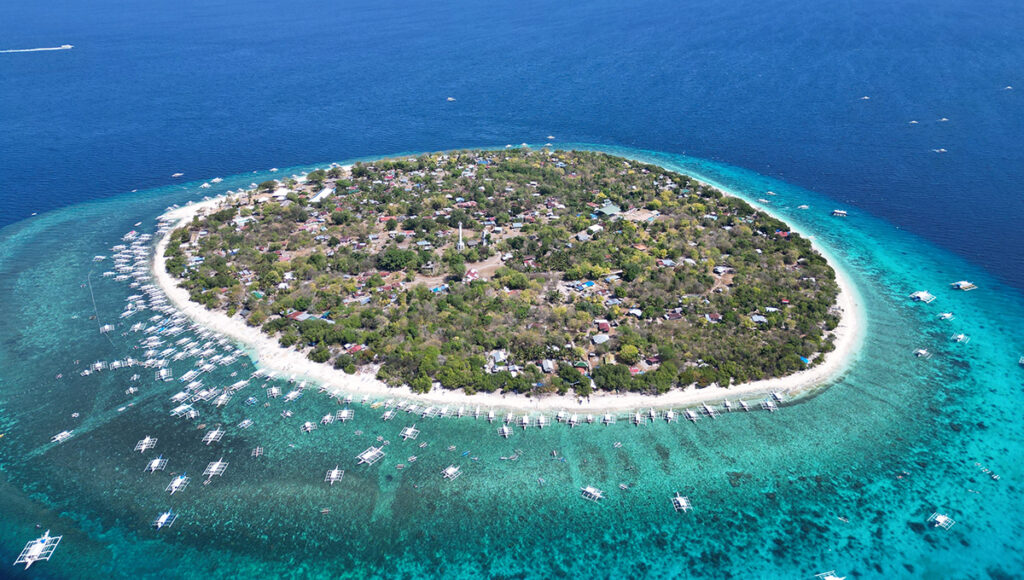
A brief boat ride from Panglao, Balicasag Island is a small, perfectly round fortress of biodiversity. It contains a protected marine sanctuary that has an enormous underwater wall that drops into darkness.
Snorkelers hover above the reef flat, looking down into the blue as schools of jackfish patrol the sun-drenched edge. The water is unbelievably clear, revealing the zephyr of turquoise coral gardens resembling jellyfish that teem with thousands of reef fish. Balicasag is the closest you will experience to almost vertical immersion without scuba gear. The wall dives here make for exceptional Philippines snorkeling. The best time to experience this is often cited as the prime Philippines diving season.
5. Tubod Marine Sanctuary, Siquijor: The Island of Healing
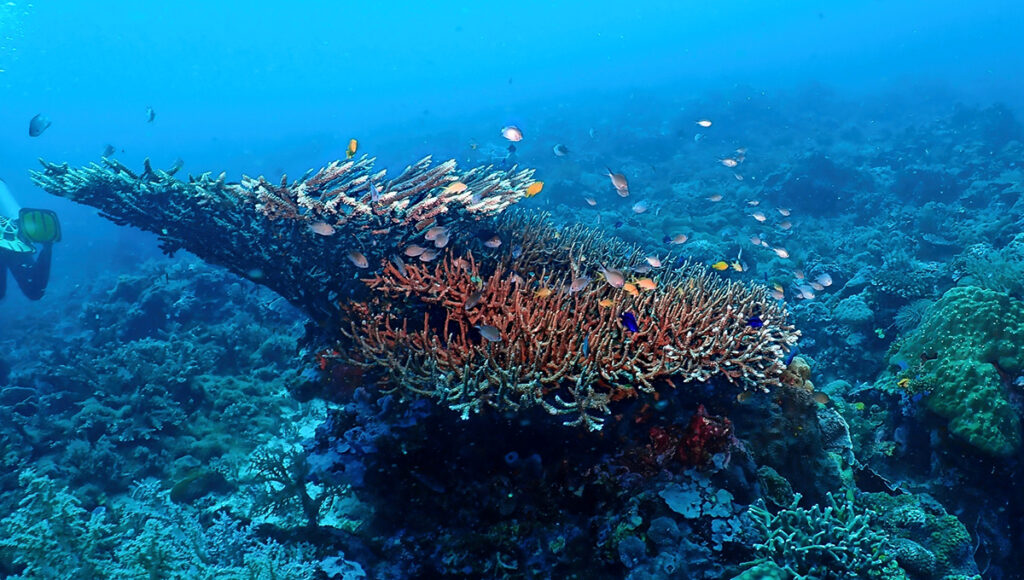
Siquijor, known as the “Island of Fire”, may be synonymous with enchantment, but it is the sea that really holds the true magic. Nestled within this small and carefully protected marine area, the Tubod Marine Sanctuary astonishes most with its health and sheer density of life.
A mere few metres from the beach, the reef is a vivid paradise of slowly sinking shallow water and is filled with gigantic table corals, anemones, and countless brightly coloured reef fish. It is a perfect place to spend hours floating in peace, observing the reef ecosystem slowly unfolding, sometimes seeing blacktip reef sharks cruising along the edge.
6. Donsol, Sorsogon: The Gentle Giants
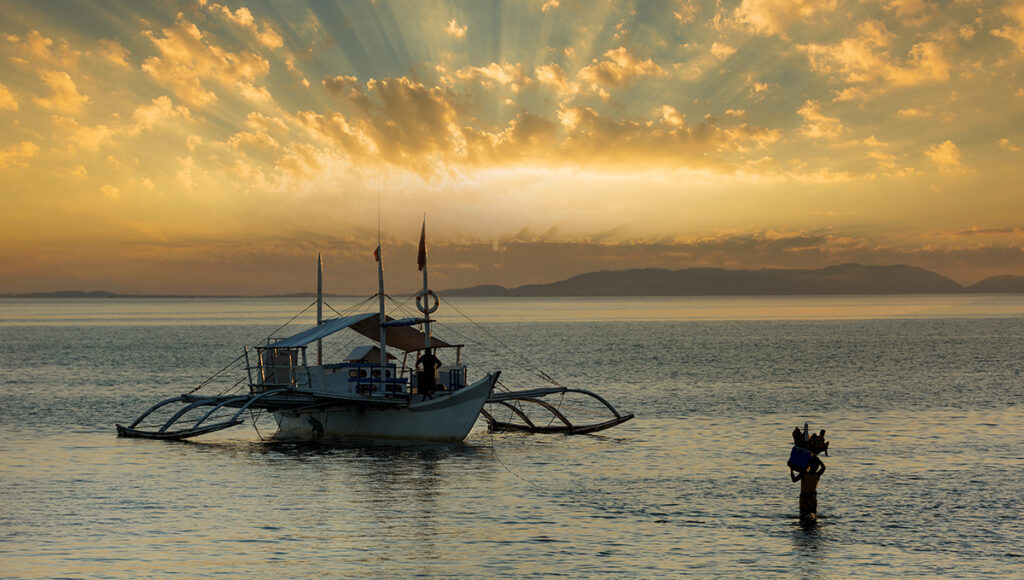
If Moalboal offers a silver experience, Donsol presents a once-in-a-lifetime moment. Donsol is the capital in the world for conscientious interactions with the gentle giants, the whale sharks (butanding).
Unlike the more commercial options, Donsol follows a strictly controlled, non-feeding, non-invasive experience. The snorkelers board a boat with a designated spotter, and when a butanding is spotted, you may enter the water and swim alongside the world’s largest fish in its natural habitat. It is a humbling, monumental experience to come face to face with such a massive spirit, a moment that truly touches the essence of the ocean.
Safety note: Always snorkel with a certified local guide and follow marine sanctuary rules to protect yourself and the ecosystem.
Part III: The Practically Magical Journey of Your 2025 Adventure.
In order to truly enjoy the Philippines’ ultimate snorkeling experience, you will need to plan some.
The Best Time to Visit.
The best time to visit most of the archipelago for Philippines snorkeling is the dry season, also referred to as the cool season, which is from December to May. According to the Philippine Atmospheric, Geophysical and Astronomical Services Administration (PAGASA), the best snorkeling conditions occur between February and April, where there is the least amount of rain, calm seas, and the best water visibility. This period typically brings stable weather patterns ideal for marine activities making it the best time to visit the Philippines.
Encountering certain creatures is generally at its peak between February and May, such as snorkeling with whale sharks in Donsol. This period is widely considered the peak Philippines diving season.
Sustainable Snorkeling: A Commitment to the Reef
The unique beauty of the Philippines is fragile. In 2025, being an ethical traveller is important.
Reef-Safe Sunscreen: Many sunscreens contain chemical compounds that bleach and kill the reefs (think oxybenzone). Choose mineral-based, reef-safe sunscreen instead.
Look, Don’t Touch: You should never touch the living corals, turtles, or any marine life. Corals are live animals that can be damaged by the lightest touch.
Fins Up: In shallow areas, mind your fin-kicks to help reduce sand disturbance, and avoid damaging the delicacy of the reef structure. This careful approach is key to enjoying responsible Philippines snorkeling throughout the best Philippines diving season.
Following these guidelines ensures responsible snorkeling and preserves marine life for generations.
Conclusion
Get your mask, strap on your fins, and prepare to be revealed. The ocean is calling. It’s an invitation to step beyond the known, to witness the quiet majesty beneath the waves, and to bring back not just memories, but a renewed connection to the blue heart of our world. Your adventure to the Philippines snorkeling grounds isn’t just a trip; it’s a profound journey into the very soul of the sea, a story you’ll carry with you long after the tide has turned. Plan your Philippines holidays with World Pinoy Flights now and let the ocean redefine your life.
FAQs for Philippine snorkeling
Is snorkeling the Sardine Run in Moalboal suitable for someone who has never been snorkeling before?
Yes! The Sardine Run is great for someone who has never snorkeled before. The large school of sardines can be found close to shore in shallow water; just float and enjoy the experience!
What is the #1 sustainable gear you recommend I bring while snorkeling in the Philippines?
Bring reef-safe sunscreen (mineral-based). This is important because it protects the coral reefs from coral damage caused by chemicals like oxybenzone. It helps protect the rich and fragile Coral Triangle ecosystem that makes Philippines snorkeling so special.
In what ways is the whale shark experience in Donsol different from other locations, and why do you recommend it?
Donsol offers an ethical, non-feeding method of interacting with whale sharks. You are able to swim with whale sharks in their natural environment with the assistance of a spotter-boat system, which is safe, respectful, and a true experience.
Do I need to be a strong swimmer to enjoy snorkeling in the Philippines?
Not necessarily! Many of the top Philippines snorkeling spots, such as Tubod Marine Sanctuary and Balicasag Island, are beginner-friendly with calm, shallow waters. Wearing a life vest and going with a local guide ensures a safe and enjoyable experience.
Is snorkeling equipment available for rent, or should I bring my own?
Most Philippines snorkeling destinations have affordable, high-quality rental equipment. However, bringing your own mask and snorkel is more hygienic and ensures a better fit if you plan to snorkel at multiple locations.
Are there guided snorkeling tours for beginners?
Yes! Many Philippines snorkeling destinations such as Moalboal, Coron, and Apo Island offer guided tours with trained local guides who help beginners feel comfortable and safe while learning about marine life.

